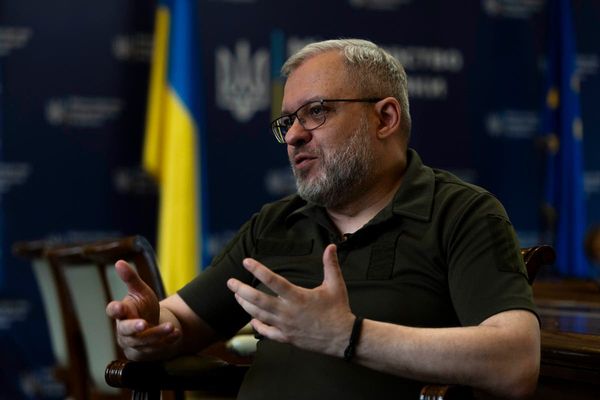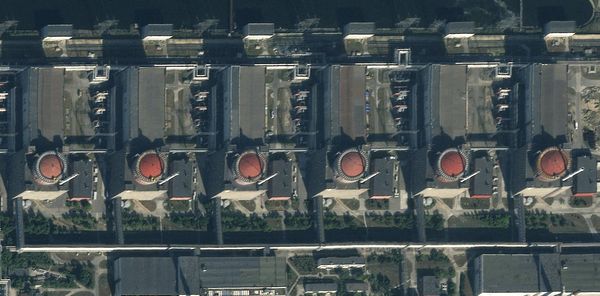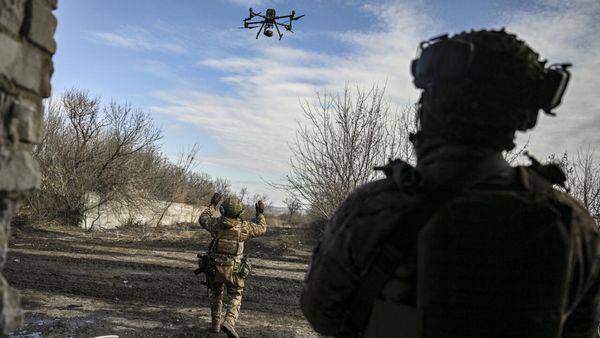
Ever since Russia launched its full-scale invasion of Ukraine, western commentators, policy advisers, and political leaders have raised the spectre of nuclear war to argue against supplying Ukrainians with weapons of self-defence for fear of provoking Russia. But this cautious approach could backfire, leading us closer to nuclear catastrophe.
For Ukrainians, the question of whether Russia will sabotage the Zaporizhzhia nuclear power plant (ZNPP), Europe’s largest, located in southern Ukraine, has long been a “when”, not an “if”. Last week, Ukrainian civilians and officials shared panicked messages on social media as fears of a potential attack crystallised. Russian embassies and Vladimir Putin’s spokesperson appeared to be preparing disinformation lines, suggesting that Ukraine, which suffered so terribly from the Chornobyl nuclear accident, could deliberately unleash radioactive terror on its own people.
While unconvincing, the rhetoric was an eerie and foreboding reminder of past Kremlin disinformation campaigns following Russian atrocities: the Skripal poisonings, the Bucha massacre, the downing of passenger jet MH17, and the destruction of the Kakhovka dam.
The instinct by some of Ukraine’s allies to reduce the risk of Russia turning to its nuclear arsenal is entirely correct, but the tactics are misguided. The west’s mixed signals over its willingness to defend Ukraine are widely considered to have contributed to Putin’s decision to launch his genocidal war.
Since the invasion 17 months ago, Putin appears to have remained convinced that he has the “strategic patience” to outlast the west and assure his victory. In his defence, he can cite some compelling evidence to support his belief. After Russia’s 2014 annexation of Crimea, the US and EU response was underwhelming – limited to symbolic but often ineffective personal sanctions. More recently, the international community’s muted reaction to the Kakhovka dam catastrophe will have hardly caused him to reconsider his strategy.
But in the absence of a clear, coordinated plan to deal with Russia’s escalating nuclear threats, western leaders have edged us closer to the nuclear disaster they are seeking to avoid. Russia possesses the world’s largest nuclear arsenal, a dubious achievement it is not shy of broadcasting. A nuclear war would herald the end of global civilisation. Even use of a tactical nuclear weapon, resulting in a smaller explosion, would be a catastrophe for Ukraine. Any serious assessment of nuclear risk means not underestimating this.
But it is also crucial that western leaders consider the consequences of being cowed by Putin’s threats, which are designed to force the world to indulge his rapacious appetite to destroy Ukraine. By providing Ukraine with war-winning military support, the west can send a message to the Kremlin – and any other irredentist powers – that using nuclear threats will not work.
Focusing on Russia’s nuclear arsenal alone distracts from more immediate threats, namely the alleged positioning of explosives around ZNPP, which has been under occupation by Russian armed forces since March 2022. Russia has amassed military personnel and equipment inside the facility, and there are reports that the children and families of Ukrainian operators forced to work at ZNPP are being held hostage in Russia, having been removed from the vicinity of the plant under the guise of “evacuation”. Against the backdrop of ongoing Russian war crimes in Ukraine, the fear that the Kremlin is preparing an act of nuclear terrorism is far from unreasonable.
When this could occur or what this act might look like remains unclear. Some experts suggest that it is likely Russia will blow up a small part of the plant, such as a cooled reactor, to display what it is capable of, or to slow down the Ukrainian counteroffensive. This would be unlikely to lead to radiation leakage – but there are also much riskier scenarios. A stronger explosion could cause damage to the protective shell of a reactor, spreading radiation approximately 350 miles from the site of the blast and creating a disaster of catastrophic scale.
Perhaps the threats can be dismissed as part of Russia’s information warfare – another way to terrorise the Ukrainian civilian population. Last week, 10 Ukrainian civilians were killed by Russian missiles in Lviv, Ukraine’s most western and peaceful city. But nuclear catastrophe is not something to leave to chance or half measures. The Vienna-based International Atomic Energy Agency (IAEA) has worked under trying conditions to ensure the safety of the plant, but it has lost the confidence of many in Ukraine. In its latest inspection, the IAEA insisted the plant was secure but also requested further access, as it was prevented from viewing parts of the site where Ukrainian officials claim mines have been planted.
This situation is untenable. Much more robust action is needed to restore nuclear safety, and confidence. The best possible chance of demilitarising (and de-occupying) ZNPP would involve a multilateral taskforce formed of parties trusted by all sides, including the US, China, India, the UK and the EU, which could supervise the area around the station with IAEA support and expertise.
In the absence of such efforts, much of Europe remains hostage to fortune. World leaders must now face up to some tough decisions, rather than giving in once more to Russian blackmail or ignoring the problem until it starts to radiate into Ukraine’s atmosphere – and beyond.
Dr Jade McGlynn is a research fellow at King’s College London and the author of Russia’s War and Memory Makers: The Politics of the Past in Putin’s Russia










